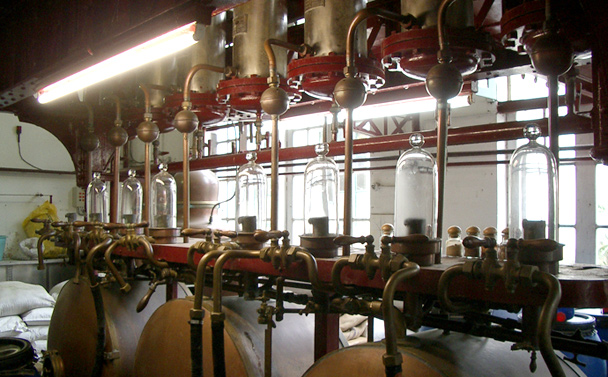With apologies to George Santayana, it appears that those who cannot remember the past will be condemned to miss out on some spectacular booze. Have no fear, though, we promise this history lesson will be anything but dry; in fact, the result of our research and investigation is guaranteed to be a wetting of the whistle.
We’ll start our studies with another famous George and a rhetorical question: Could “George Washington slept here” (the first real estate cliché, predating “location, location, location” by a few years) owe something to our first president’s interest in distilled spirits? He was reportedly a moderate drinker, leaning to wine, and particularly Madeira, so it probably wasn’t overindulgence that made him so soporific. While there doesn’t seem to be any evidence that the father of our country was a cheap date, there is no shortage of documentation of almost every other aspect of Washington’s life, including ledgers recording his farm-based business producing and selling whiskey, as well as the recipes used to make it.
The genesis of Washington’s distillery can be traced to, perhaps not surprisingly, a Scotsman. James Anderson, Mount Vernon’s farm manager, felt the plantation would benefit from the ability to produce ardent spirits, and in 1799, two years after the distillery was built (and the year Washington died), it was the largest in America, yielding 11,000 gallons of rye whiskey. Unlike modern versions of the spirit, the rye of that time was sold unaged, so it would have been clear, spicy, and quite strong. The distillery continued to operate after Washington’s death, and was a major source of income for his heirs for a number of years, until it burned down in 1814.
In 2005, restoration of the building began, with the help of a grant from the Distilled Spirits Council of the United States, a trade association that represents liquor producers and marketers. The $2.1 million restoration was completed in 2007, and three years later an unaged rye was made available to the public. Last year, an aged rye was also released, and this summer there will be a peach brandy. Quantities of all Mount Vernon spirits are minuscule, and in truth they’re more of a collector’s item than an everyday tipple, but if you’re interested in how an 18th-century alcoholic beverage might’ve tasted, this is as close as you’re likely to get.
Other small-batch distillers have looked to the past to create their products, most notably Anchor Distilling. The San Francisco—based company owned by Fritz Maytag made its mark by resurrecting steam beer, a style that was on the verge of extinction when Maytag got involved, in 1965. When Anchor decided to get into the spirits game, in 1993, it chose to make a lightly aged 100 percent rye. (Most come in close to the legal minimum of 51 percent rye; the balance is usually corn and malted barley, which are cheaper, sweeter, and easier to work with.) The result, Old Potrero 18th Century Style Whiskey, is not for everyone, but if you like intense, spicy, even challenging flavors it’s worth a shot. Templeton Rye, made in Iowa, only goes back to Prohibition for its recipe, but their grain blend is 90 percent rye—an unusually high percentage. It’s also aged longer and in more deeply toasted barrels than the Old Potrero, so naturally it’s sweeter and mellower.
Moving from American to European history, perhaps the most exciting new release of 2011 took more than a century to get to market. Its journey began and ended in Scotland, and included at least one trip of nearly 10,000 miles, a prolonged period in the deep freeze, not to mention some intense scientific poking and prodding. Mackinlay’s Rare Old Highland Malt Whisky is a modern recreation of the Mackinlay Scotch that explorer Ernest Shackleton took with him—some 25 cases of it—when he left England in 1907 bound for the South Pole. Shackleton and his men got within nearly 100 miles of the pole but were forced back to their ship, the Nimrod, in March 1909, by bad weather. In their haste, they left behind a portion of their liquor closet. Fast-forward nearly a century, to 2007, when a team working on the conservation of Shackleton’s expedition hut uncovered five crates, three labeled “whisky” and two that contained Australian brandy. One of the whisky crates was carefully extricated from the ice and flown to Canterbury Museum, in New Zealand, where its temperature was raised slowly over the course of two weeks, penguin feathers and other debris were cleaned up, and the straw packing was allowed to dry to the point where it could be removed. Incredibly, 10 of the 11 bottles in the case were intact.



 Pinterest
Pinterest


